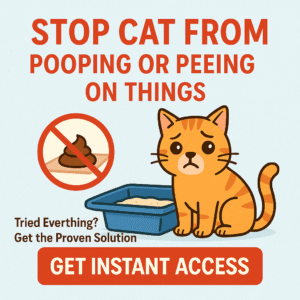Discovering your kitten has peed on the bed can be disheartening—but it’s rarely about disobedience. More often, it’s a signal: something isn’t right with their health, routine, or environment. This guide will walk you through every possible cause, step-by-step solutions, and a path to reclaimed comfort—for both you and your furry friend.
Plus, you’ll see how the Cat Spray No More ebook provides a structured, empathetic system to support your kitten’s development and housekeeping routines, making mishaps less stressful—and less likely.
1. Medical Issues: Never Skip the Vet
Quick answer: Even kittens can have UTIs, bladder inflammation, or congenital urinary issues. These cause pain during urination, leading them to pee in strange locations like your bed.
Action Step: Book a vet visit with urinalysis and basic blood tests. Treating any medical problem early prevents pain and confusion—and often resolves the behavior fast.
2. Litter Box Setup: Make It Easy & Inviting
Kittens need litter boxes tuned to their needs. A box that’s too big, dirty, or poorly placed can be intimidating.
- Small, shallow box: Easy for kitten to climb into.
- Fine-grain, unscented litter: Soft on delicate kitten paws and noses.
- One box per kitten + one extra: Avoids crowding or competition.
- Easy access: Place boxes on each level, near sleeping zones and away from noisy appliances.
Checklist: Use a shallow, open box with soft litter—clean twice daily and wash it weekly with gentle, unscented soap.
3. Accidents vs. Marking: Understand the Difference
Kittens usually have accidents—they’re still learning. Marking is intentional, often seen in older cats. Recognizing which one you’re dealing with helps guide your response.
- Accident clues: Wet spot, no tail flagging, random timing.
- Marking clues: Vertical surfaces, tail up, spraying posture.
For kittens, focus on training instead of behavior modification—they’re building habits, not engaging in rebellion.
4. Stress & Routine Disruptions
Kittens feel stress too—from moving house, new pets, or changes in routine. Peeing on a comforting surface like your bed can be a sign they’re feeling insecure.
- Help them feel safe: provide hiding spots (cardboard boxes or tunnels).
- Offer routine playtime and feeding schedules.
- Use pheromone diffusers like Feliway to soothe their world.
5. Learning Stage: Normal Kitten Curve
Most kittens under 6 months will have accidents—they’re still mastering bladder control. Treat every accident as a learning opportunity.
- Gently place them back into the box after eating or waking.
- Praise and reward when they use the box correctly.
- Keep boxes clean and accessible at all times.
Never yell or punish—it worsens anxiety and delays learning.
6. How to Clean Bed Accidents Effectively
Kitten urine smell can linger even when you can’t detect it—prompting repeat accidents.
- Use enzyme-based cleaner: Fully breaks down urine scent molecules.
- Soak thoroughly: Spray until the fabric stays damp for at least 10 minutes.
- Air and sun–dry: UV helps neutralize residual odors.
- Prevent re-soiling: Place a waterproof cover until you’re sure it’s entirely clean.
7. Positive Reinforcement Training
Each time your kitten uses the box successfully, reward immediately with a soft treat or gentle praise. Quick, positive feedback encourages repeat behavior.
Additionally, keep your kitten occupied and relieve stress with puzzle feeders and interactive play—that excess energy often leads to behavior issues otherwise.
8. Build a Safe, Kitty-Friendly Environment
- Provide vertical access: Low shelves or low scratching posts help them explore safely.
- Use baby gates: Block your bedroom at night to prevent midnight accidents.
- Add comfort zones: Cozy beds near low human traffic areas help build confidence.
9. Use Routine & Tracking—Kitten Edition
The Cat Spray No More ebook encourages structured logs and routines—even if you aren’t dealing with spray, it still works here:
- Incident log: Note accidents—time, location, context—to spot patterns.
- Routine check-ins: Scheduled feeding, playtime, litter scooping, cleanups.
- Environmental checklist: Box condition, litter type, pheromone placements.
Such structure helps you catch issues early and avoid stress-driven accidents.
10. When to Get Professional Help
- Accidents persist after 3–4 weeks of training.
- The behavior escalates to marking (lifting tail or vertical surfaces).
- Changes accompany lethargy, appetite drop, or painful urination—even in kittens.
- Stressors persist despite routine-building efforts.
Real-Life Kitten Peeing Turnaround
“Milo, our 4-month-old rescue, was peeing on the bed within hours of sleep. We visited the vet—he was healthy. Then we switched to three shallow boxes, cleaned twice a day, shut our bedroom door, and started log-checks per the ebook’s template. Using gentle praise and play time routines, he learned fast. Within two weeks, the bed spots stopped and he began using his boxes reliably.”
14-Day “Kitten Bed Peeing Fix” Action Plan
| Days | Focus | Actions |
|---|---|---|
| 1–2 | Vet & Vertical Check | Vet visit, check for pain, set up 3+ small litter boxes |
| 3–5 | Box Training | Frequent box placement, gentle praise, soft bedding in boxes |
| 6–9 | Environment & Routine | Block bedroom at night, add pheromone diffuser, consistent feeding |
| 10–14 | Reinforcement | Reward good behavior, clean accident-free zone, consolidate one box per level |
| 15+ | Maintenance | Log for 1 month, adjust as needed, celebrate successful box habits |
What Success Looks Like
- Within a week: fewer bed accidents, more confident behaviors
- Week 2–4: consistent litter box use, no nightly urination on the bed
- 1–2 months: solid daytime and nighttime box habits established
- 3+ months: independent kitten using their box reliably—no bed incidents
You’re Doing the Right Thing—Here’s Why It Works
Kitten accidents come from learning curves, routine gaps, or stress—not defiance. With time, compassion, structure, and training, they build healthy habits fast. The Cat Spray No More ebook provides tools—monitoring systems, cleaning protocols, environmental design, bonding strategies—that apply even to young kittens. You and your kitten both deserve a calm, confident path forward.
Download Cat Spray No More today and give your kitten the structured support—and your home the confident calm—it deserves.
